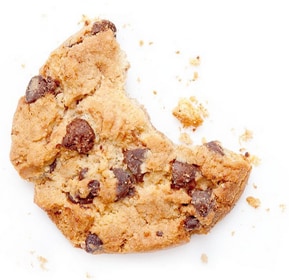CoLumbo is an image analysis software that provides analysis from previously acquired DICOM images to support radiologists in viewing and evaluating spine images. It provides automatic segmentation, automatic measurements and assessment of findings and their level of suspicion.
The purpose of the device (software) is to assist radiologists in reading MRI images of the lumbar spine of patients referred to L-spine MRI for leg and/or back pain or other spine-related symptoms or conditions. It provides information on detected findings and abnormalities and reduces the time to write the report. The results are reviewed and confirmed by a radiologist.
CoLumbo assist the physician in evaluating the spine by:
- automatically outlining tissues of the spine;
- automatically detecting the spine's findings;
- accurate automatic measurements;
- automatically creating of draft report with detected findings and abnormal measurements;
CoLumbo Output
Discover CoLumbo
on Calantic
- Pulse sequence – T2w;
- Body part – only Lumbar spine (L-Spine) images;
- Magnetic Field Strength – 1,5T or 3T;
- MR Acquisition Type - 2D or 3D;
- Scanning Sequence – SE,FSE/TSE;
- Repetition Time: at least 940 ms;
- Echo Time: from 60 ms to 300 ms;
- At least one sagittal T2w sequence with a minimum of 5 slices;
- At least one axial T2w sequence;
- Maximum slice (axial and sagittal) thickness 5 mm;
- Min Sagittal Resolutions(Cols x Rows): 280x280;
- Min Axial Resolutions(Cols x Rows): 192x192;
- Maximum voxel volume 3 mm3 for 2D sagittal series and 1 mm3 for 3D sagittal series;
- Maximum voxel volume 1.6 mm3 for axial series;
Pathologies & Findings
- Herniation and its size, location and possible descending and/or ascending migration
- Protrusion and extrusion herniation modifiers
- Nerve root impingement
- Dural sac compression
- Central spinal stenosis – schizas and lee morphological graidng
- Antero and retro – spondylolisthesis
- Symmetrical and asymmetrical bulging
- Hypo and hyper-lordosis
- Reduced disk height
- Reduced vertebral body height
- Axial foraminal size
- Osteophites
- Fat infiltration in muscle tissue
- Lipomatosis
- Lateral recess stenosis
Tissue Boundaries
- Level labels
- Vertebral body
- Other parts of the vertebra
- Disc
- Herniated part of the disk
- Dural sac
- Nerve roots
- Ligamentum flavum
Measurements performed
- Size of herniation
- Herniation circumference
- Herniation location score
- Protrusion ap size
- Extrusion ap, cc, lr size Migration size
- Nerve root impingement score
- Dural sac area and stenotic ratio
- Spinal canal ap diameter
- Listhesis percentage and grade
- L1s1, l1l5 and l1l4 lordotic angles
- Bulging size
- Bulging circumference
- Bulging symmetry score
- Disc height (anterior, middle, posterior) and ratios
- Vertebral body height (anterior, middle, posterior)
- Intervertebral angles
- Facet joint thickness size
- Face joint angle
- Pseudolisthesis slippage
- Foraminal stenosis clearance size dural sac brightness and contrast coefficient
EU risk class and CE marking
CoLumbo has CE marking (CE1912) and risk class IIa.
Reimbursement status
Not reimbursed
Contraindications
No contraindication given.
Target Population
The target population consists of patients referred for L-Spine MRI due to back and/or leg pain or other spine-related symptoms.
However, individuals under 18, over 70, pregnant women, and those with conditions like scoliosis or a history of spinal surgery are excluded from automatic analysis due to significant morphological differences in their spines.
While these individuals are not part of the target population for analysis, the product can still visualize their studies without automated assessment.
Limitations
CoLumbo does not support and is not intended for:
- Studies, other than of the lumbar spine;
- Patients under 18 years of age;
- Patients who are probably pregnant;
- Patients with surgeries, spine implants, tumors, fractures;
- Studies of patients with concomitant scoliosis;
- Studies with contrast media used;
- Studies with missing files and/or images;
- Studies with Echo Times below 60 or above 300;
- Studies with Repetition time under 940.
Discover other solutions
Gleamer BoneView Detection Function
BoneViewDetection function is a software as a service that takes as an input X-ray radiographs in DICOM format, processes them using artificial intelligence (deep learning), and provides as an output the detection of anomalies.
Gleamer BoneView BoneAge
BoneView BoneAge function is a software intended to provide preliminary data to assist physicians in assessing the bone age, according to the Greulich and Pyle’s method, on children’s hand radiographs.
BoneView Measurement
The measurements functionality of BoneView (BoneMetrics) is a radiological fully automated image processing software device intended to analyze standard radiographs using machine learning techniques.










